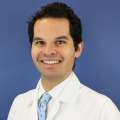Although heart disease tends to be associated with men, more women die each year from cardiovascular disease (CVD) than men. CVD accounts for more deaths among women than cancer, lung disease and diabetes combined. Cardiac screening can help determine an individual’s risk. Pritha P. Gupta, MD, PhD, a UCLA cardiologist in Beverly Hills, and Nidhi Thareja, MD, a UCLA cardiologist in downtown Los Angeles, explain the importance of cardiac screening, what it entails and how it can help women reduce their risk of CVD.
Why should women be screened for heart disease? “Women and men should be aware of their risk factors for cardiovascular disease and work toget her with their primary care provider to minimize those risks,” Dr. Gupta says. In addition to the risk factors that affect everyone, notes Dr. Thareja, “women have several gender-specif ic issues that can increase their risk of heart disease and may not be aware of them.” These include irregular periods, early menopause, use of birth control pills, PCOS (polycystic ovarian syndrome) and pregnancy-related complications, such as gestational diabetes. Once a physicia n identifies a patient’s individual risk factors — based on family history, lifestyle and lab tests — physician and patient together can target and mitigate those risk factors with medication and lifestyle modifications.
In addition to the risk factors that affect everyone, says Dr. Agarwal, “women have several gender-specific issues that can increase their risk of heart disease, and they may not be aware of them. These include irregular periods, early menopause, use of birth control pills, PCOS (polycystic ovarian syndrome) a nd preg na nc y-related compl ic at ions. Autoimmune disease also increases risk. Although men can also have autoimmune diseases, they are more prevalent among women.” Dr. Agarwal explains that once a physician identifies a patient’s individual risk factors — based on family history, lifestyle and lab tests — physician and patient together can target and mitigate those risk factors with lifestyle modifications and medication.
“We have to think about screening from the time when people are young to identify risk factors that might persist into older age,” Dr. Kamath says. She notes that once a physician identifies a patient’s individual risk factors — based on family history, lifestyle, lab tests and a physical exam — physician and patient together can target and mitigate those risk factors with lifestyle modifications and medication.
“It’s important for women to know their risk factors and what they can do to optimize their health care,” Dr. Sohrabian says. “They might not realize their cholesterol levels are problematic or the importance of family history. We want to do as much preventative care as possible to avoid more serious issues in the future.” In addition to the risk factors that affect everyone, women have gender-specific issues that can increase their risk of heart disease. These include irregular periods, early menopause, use of birth control pills, PCOS (polycystic ovarian syndrome) and pregnancyrelated complications, such as gestational diabetes. Autoimmune disease, which is more prevalent among women, also increases risk.
“Heart disease tends to be underrecognized in women, and women tend to have worse outcomes than men because of that,” Dr. Philipson says. “Women and their physicians need to have their antenna up when it comes to identifying heart disease.” The goal is to identify each woman’s individual risk factors — based on family history, lifestyle, lab tests and a physical exam — so that women and their physicians together can target and mitigate risk factors with lifestyle modifications and medication.
What tests are involved and when should they start? “Baseline screening starts when you see your primary care doctor for a routine physical, which will include blood pressure and cholesterol testing” Dr. Thareja says. Women at average risk should repeat blood pressure testing at least once every two years and cholesterol testing every four-to-six years. In addition to individuals with a family history of CVD or those with abnormal initial screening tests, those considered at elevated risk, including women who are overweight, age 50 and above, smokers and cancer survivors, may require more frequent or additional testing and evaluation. What can women do to decrease their risk of developing heart disease or to lessen it if they have been diagnosed as at risk? Lifestyle habits are key, Dr. Gupta says. “First, aim to exercise at least 30 minutes, five times a week, at moderate intensity. Second, try to have a mostly plant-based diet, meaning predominantly vegetables and whole grains.” She also urges patients not to smoke or take drugs and to drink no more than one alcoholic beverage a day.
Women should have blood pressure and cholesterol levels tested during their annual physicals. Women at average risk should repeat blood pressure testing at least once every two years and cholesterol testing every four-to-six years. In addition to individuals with a family history of CVD or those with abnormal initial screening tests, those considered at elevated risk, including women who are overweight, age 50 and above, smokers and cancer survivors, may require more frequent or additional testing and evaluation.
“Keeping up with your primary care provider is where screening begins,” Dr. Philipson says. “Your physician should screen your blood pressure, blood sugar and cholesterol levels and use those results, along with family history and current health, to determine the frequency of further testing.” In addition to individuals with a family history of CVD or those with abnormal initial screening tests, those considered at elevated risk, including women who are overweight, age 50 and above, smokers and cancer survivors, may require more frequent or additional testing and evaluation.
What can women do to decrease their risk of developing heart disease or to lessen it if they have been diagnosed as at risk? “We have many tools to help,” Dr. Agarwal says. A healthy diet — one that is low in salt and saturated fat, high in vegetables and whole grains — and regular exercise of moderate intensity for at least 150 minutes per week benefit everyone. Dr. Agarwal may refer a patient to UCLA’s clinical nutrition clinic, medical weight management or smoking cessation programs. “I may work with the patient’s rheumatologist to treat autoimmune conditions or with her gynecologist to help better regulate her hormones. When appropriate, we can also use medications to help lower blood pressure, cholesterol and blood sugar.”
“Keeping up with your primary care and cardiovascular providers is a great first step as they can check blood pressure, cholesterol and blood sugar levels and prescribe pharmacologic therapy if needed,” Dr. Kamath says. “Lifestyle modifications are key. For diet, that means focusing on a more plant-based diet, such as the Mediterranean or DASH [Dietary Approaches to Stop Hypertension] diets. For physical activity, try to get at least 30 minutes of moderate-intensity exercise at least five times a week, if not every day.”
“It’s important for women to know their risk factors and what they can do to optimize their health care,” Dr. Sohrabian says. “They might not realize their cholesterol levels are problematic or the importance of family history. We want to do as much preventative care as possible to avoid more serious issues in the future.” In addition to the risk factors that affect everyone, women have gender-specific issues that can increase their risk of heart disease. These include irregular periods, early menopause, use of birth control pills, PCOS (polycystic ovarian syndrome) and pregnancyrelated complications, such as gestational diabetes. Autoimmune disease, which is more prevalent among women, also increases risk.
“Modifiable risk factors such as high blood pressure, cholesterol and diet need to be controlled as best as possible to avoid or delay developing problems,” says Dr. Philipson. “A healthy diet and regular physical activity can help lower risk. In both cases, people need to choose strategies that are sustainable. For diet, that means reducing intake of sugar and saturated fats, but not necessarily cutting them out entirely. Moderation is key. For exercise, find something you enjoy, whether that’s walking on the beach, riding on a stationary bike or swimming.”
What symptoms of cardiovascular disease do women experience? “Generally, with cardiovascular disease, symptoms occur with exertion and improve with rest,” Dr. Gupta says. “But women may feel chest pain at rest. They also more frequently report atypical symptoms.” Women may experience fatigue, heart palpitations, rapid heartbeat, dizziness, heartburn, nausea and sweating. According to the American Heart Association, women’s heart attack symptoms may also include vomiting and pain in the neck, jaw, throat, abdomen or back. “When a woman feels something unusual happening in the chest area, she should have it evaluated,” Dr. Thareja says.
Chest discomfort is the most common symptom for both women and men. While men tend to feel it as pain, women may experience more of a feeling of pressure. “Chest discomfort or windedness on exertion or even light activity is an indicator,” Dr. Agarwal says. Women more frequently report fatigue, heart palpitations, rapid heartbeat, dizziness, heartburn, nausea or sudden sweating. According to the American Heart Association, women’s heart attack symptoms may also include vomiting and pain in the neck, jaw, throat, abdomen or back.
Dr. Kamath says, “Women tend to have more atypical symptoms for cardiovascular disease. Instead of the traditional crushing chest pain, they may have pain or discomfort in the upper abdomen, sensations of indigestion or discomfort in the neck, jaw or shoulder. They may experience shortness of breath, nausea, vomiting, sweating, or feel fatigued, lightheaded or dizzy.” While these symptoms may have other causes, “If your gut tells you something feels off, get it checked out,” she says.
Chest discomfort is the most common symptom for both women and men. “However, women often have more nonspecific symptoms, such as acid reflux, nausea, dizziness and fatigue,” Dr. Sohrabian says. According to the American Heart Association, women’s heart attack symptoms may also include vomiting as well as pain in the neck, jaw, throat, abdomen or back. “It’s important to be in tune with your body, so if something is abnormal for you, you get it checked out.”
Chest discomfort that occurs with exertion and improves with rest is the most common symptom for both women and men, Dr. Philipson says. However, women may feel pain in the upper abdomen, sensations of indigestion or discomfort in the neck, jaw or shoulders. They may experience shortness of breath, nausea, vomiting, sweating or feel fatigued, lightheaded or dizzy. “As one of my mentors said, any sensation a woman has from her nose to her naval could be a manifestation of heart attack and should be checked out.”
What else should women know about heart disease? “Know that cardiovascular disease is one of the most common causes of death and disability for women and be aware of what risk factors you have,” Dr. Thareja says. “Start the conversation early with your primary doctor, who can refer you to cardiology if you need us,” Dr. Gupta says. Most importantly, say both physicians, women should be proactive about their heart health.
“Our hormones are very cardioprotective,” Dr. Agarwal says. “When we go through menopause or have irregular periods and fluctuating hormonal levels, we begin to lose that protection.” Women tend to present with cardiovascular disease an average of 10 years later than men, but they can experience it at any age.
“We have very collaborative relationships at UCLA and work together with our colleagues in other specialties to make sure patients receive comprehensive care,” Dr. Kamath says. “Patients can leverage the resources of UCLA Health and take advantage of the world-class care available here.”
“The earlier people are seen and we can catch issues, the earlier we can intervene and the better outcomes we can have,” Dr. Sohrabian says. “The practice of cardiology has become very advanced in recent years, and we’re really capable of controlling risk and preventing the need for aggressive intervention when patients come to us promptly.”
“Statins remain the best medications we have to help people live longer by reducing risk of heart attack and stroke,” Dr. Philipson says. “They are extremely effective, and people at risk who take them tend to live longer than those who don’t.”





